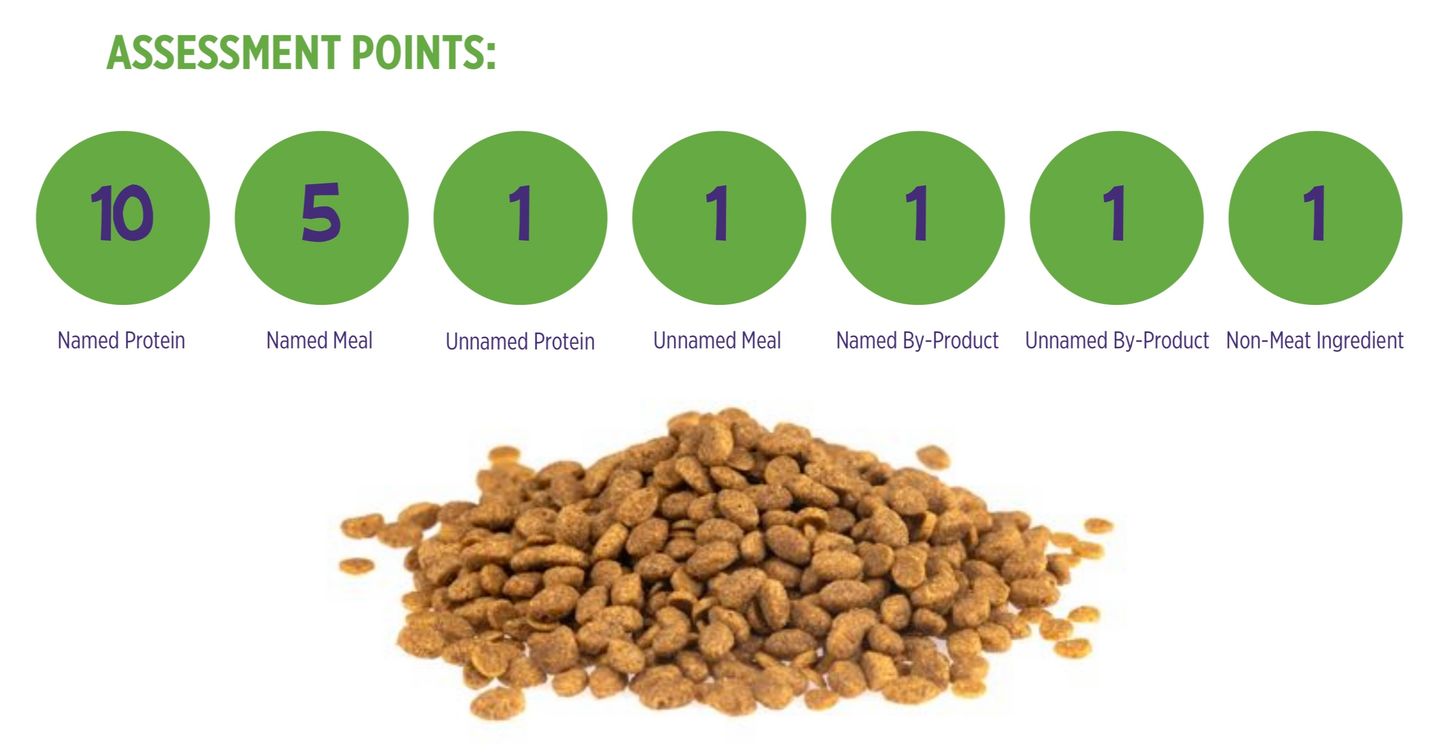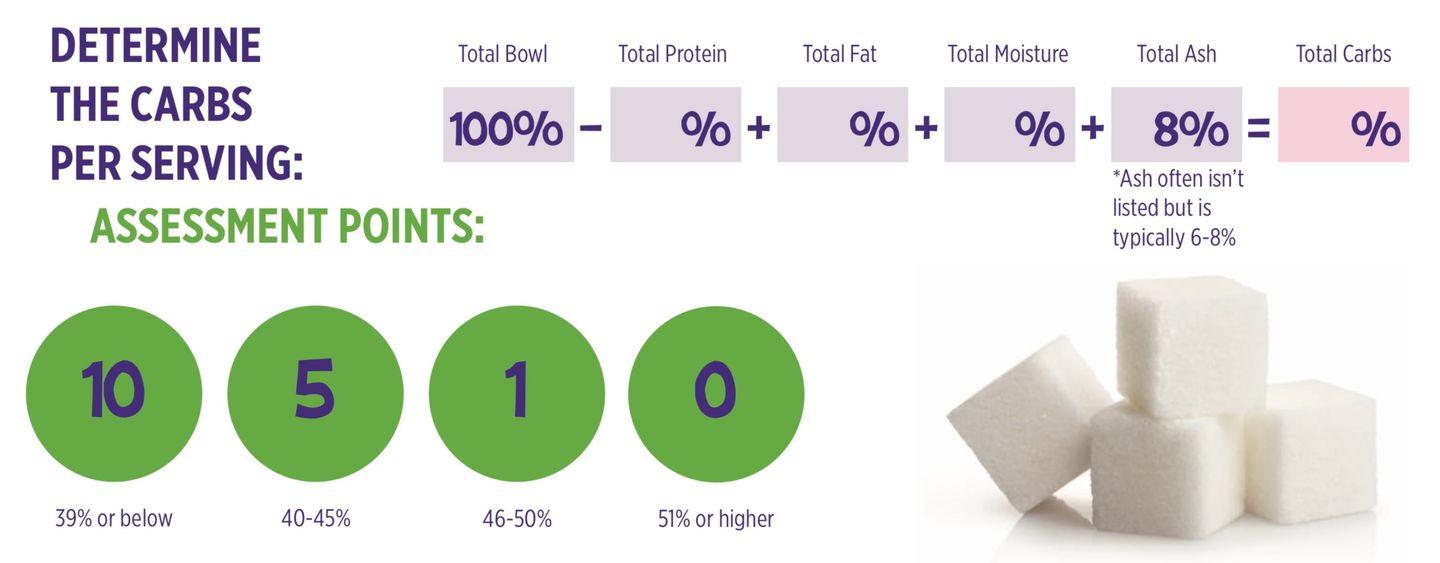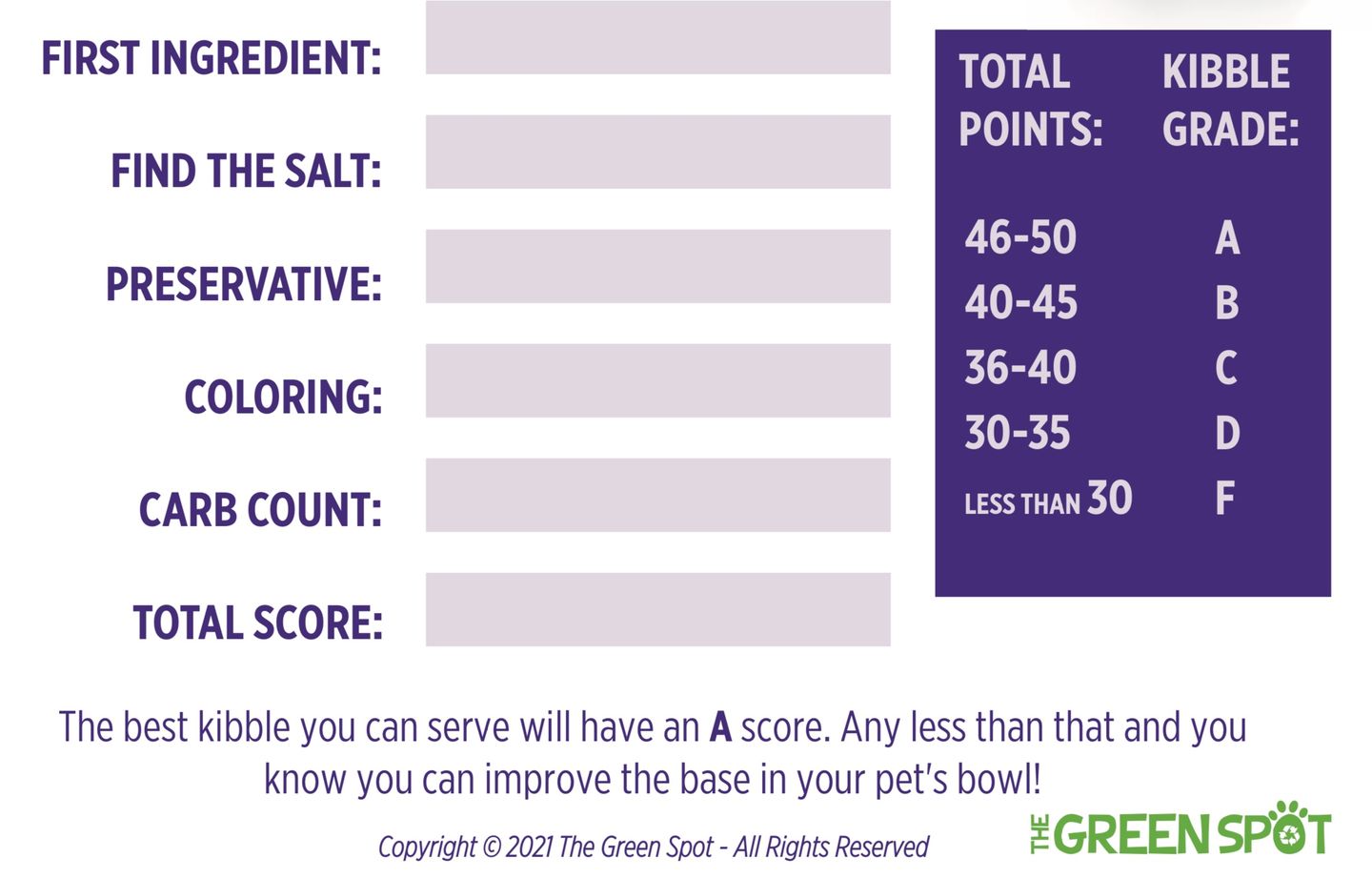This is going to be a long (but important) one Green Spotters! If your pet eats kibble, this blog post is important to your pet's health. Follow along to learn more about, and grade, your kibble.
NOT ALL KIBBLE IS CREATED EQUALLY!
If you're feeding your pet a dry kibble diet, you want to make sure it's the absolute best option available! Then you'll also want to #BoostTheirBowl to improve the nutrition you provide your pets! Just like you and I, our pets thrive on a fresh, whole food diet! They can survive on a processed diet, but that's comparable to you and I eating fast food our entire life! Less processed food and more whole, fresh food is the key to a healthy, happy pet! We know we can extend their lives through nutrition, so we want to make sure we're providing the best nutrition possible that’s within our budget!
This self-assessment will help you understand if the kibble you're feeding today is a good option for your pet. We are always happy to help pet parents navigate the crazy world of pet food and offer nutrition consultations that will allow you to ensure you're feeding the best diet to your pet for optimum health while working with your budget!
We know that in order to extend the lives of pets through nutrition, we must help pet parents understand more about the pet food they feed.
Let’s Grade Your Kibble!
Let's take a look at the dry food you're serving today and help you get a better understanding of what's in your pet's bowl! Grab your bag, you'll need to reference it to grade your kibble!
This is a high-level assessment that takes certain aspects of pet feed into consideration. For a more detailed and thorough analysis, please contact us, we'd be happy to help! Grab a pen and paper and get ready to grade your kibble!
Step 1: First Things First
Pet food manufacturers rely on us being awestruck by the front of their bags! The real information to determine how nutritious your pet's food is, is on the back of the bag. Grab your pet's bag of kibble and locate the ingredient panel on the back of the bag. Write down the first ingredient. Next, follow the guide below and write down the First Ingredient Score. 
Step 2: Find the Salt!
Pet food manufacturers have a dirty little secret they don't want you to know! In traditional kibble, salt (sodium chloride) makes up 1% of the bag. Ingredients are listed in order of size from biggest to smallest. That means when we find salt on the ingredient panel, anything listed after salt on that panel is less than 1%. If our fruits and veggies are listed after salt, we'd be lucky if there was one whole blueberry in the entire bag! Fruits and veggies provide tons of nutritional value to our pet's diets and that means we absolutely want to see any fruits and veggies added to their food before salt on the ingredient panel! *Corn and potatoes do not count as fruits & veggies regardless of where they're listed* Write down if there are veggies BEFORE or AFTER the salt, then follow the guide below to find the Salt Score. 
Step 3: How is it Preserved?
Pet food manufacturers know that after highly processing kibble they need to add something to try and maintain the freshness of the food. They can use a natural preservative, or a toxic preservative like a BHA, BHT, Ethoxyquin, Propylene Glycol (PG), Tertiary Butylhydroquinone (TBHQ) or Propyl Gallate. These substances are used in products like lipstick, petroleum jelly, jet fuel and embalming fluid! The absolute last place we ever want to see them is in our pet's food or treats! Whole, fresh foods do not require similar preservatives because they have a reasonable shelf life. You know for your own food, if you're buying a food in a bag that can last for three years, it likely isn't all that natural. Write down the preservative used in the kibble. Next, follow the guide below to find the Preservative Score.
Step 4: Is it Naturally Colored?
Pet food manufacturers know colorful food is appealing to us! Our pets don't care what color their food is. There are pet foods on the market that have artificial colors added to them. These artificial colors are actual paint! They are adding paint to our pet's food which is extremely toxic. We want to avoid any food or treats that contain artificial colors such as Red Dye 40, Yellow Dye 5 & 6 or Blue Dye 2. If you ever see colored dyes added to any pet food or treats, that is something you will want to avoid and not feed to your pet even if it's only occasionally! Write down if there are any colors added to your pet's food. Then, use the guide below to determine the Coloring Score.

Step 5: What is the Carb Count?
Pet food manufacturers need to add starch to kibble in order for the kibble to stay in a pellet. Starch turns into carbs and carbs become sugar. Sugar feeds disease! Reducing or eliminating carbs in our pet's diets is the best thing we can do for their overall health. Cats and dogs have no biological requirement for carbs, especially high-starch carbs. Typical kibble can have anywhere from 50%-70% carbs per serving! That means half or more of everything put in that pet's bowl is not being used by their body! Carbs are never listed on the bag! Manufacturers say it's because your animal does not require them, so they don't need to be listed. The truth is, if you knew the amount of carbs per serving, you'd never buy the food! Use the guide below to determine the Carbs Per Serving, and then find your Carb Score.

Step 6: What Grade is Your Kibble?
You've done the work! Now it's time to see how your kibble stacks up! Kibble offers pet parents convenience and is often times the most affordable option to feed. But as we know, not all kibble is created equally! We want to ensure if kibble is our base food, it's the best base we can start with! We can always #BoostTheirBowl by supplementing the nutrition the kibble offers! Let's see how your kibble grades! Follow the below guide to add up your scores! The best kibble you can serve will have an A score. Any less than that and you
know you can improve the base in your pet's bowl!

Thank you for reading along and grading your pet's kibble today! We hope you enjoyed this topic and we're here for you if you want to take a deeper dive into your dog or cat's food! Email us at info@greenspotomaha.com with your questions, or schedule no-pressure nutritional consult here: https://shop.greenspotomaha.com/products/nutrition-consultation

